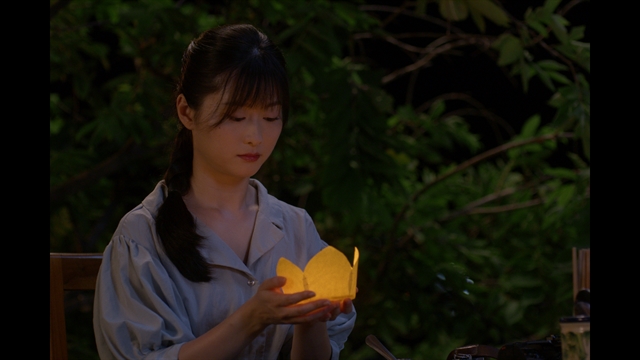 Features
Features
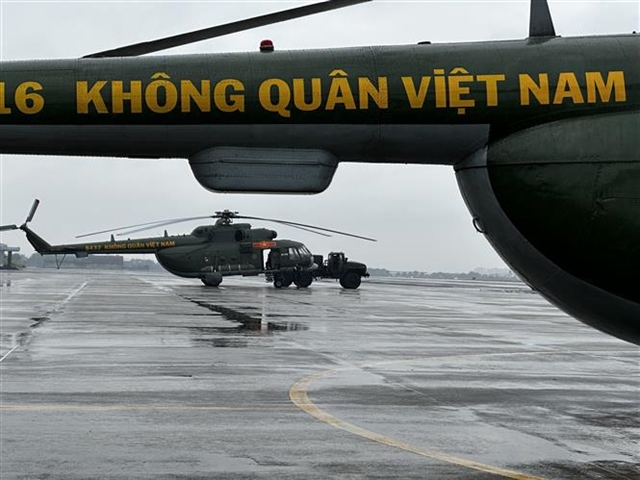
Though born in a Buddhist family in HCM City, I began to visit Catholic churches regularly for two reasons: my adoption of my godparents’ religious beliefs and my admiration for French colonial architecture.
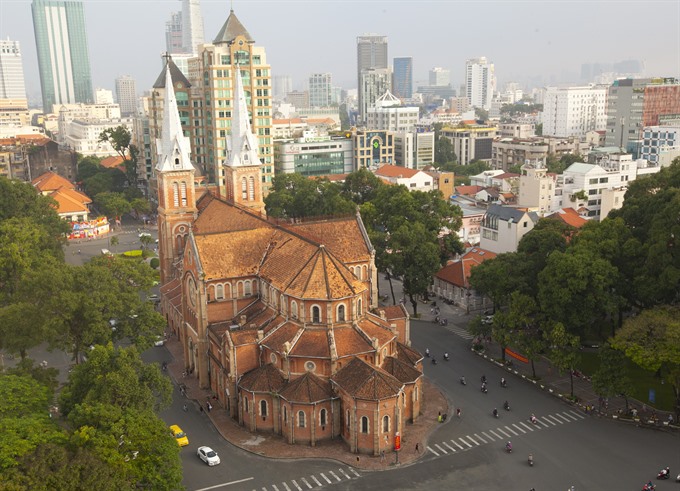 |
| Anachronism: The iconic French colonial Notre Dame Cathedral stands in the heart of the city, surrounded by massive newly built structures. VNS Photo Phương Đặng |
Though the majority of Việt Nam’s population is Buddhist, HCM City boasts a number of beautiful churches built during the French colonial era. Bồ Xuân Hiệp visits some of the most historic structures in the city.
Though born in a Buddhist family in HCM City, I began to visit Catholic churches regularly for two reasons: my adoption of my godparents’ religious beliefs and my admiration for French architecture.
Every time I go to church to pray for my family and loved ones, I feel blessed and manage to get some peace of mind, no matter how stressed I feel.
For visitors of any religion who want to be immersed in a tranquil atmosphere, visiting a church in the city can be a rewarding experience.
Some of the most beautiful churches, such as Notre Dame Basilica, Tân Định and Huyện Sỹ in downtown HCM City, have been popular with local and foreign tourists for years.
But few people, even local residents, know the history behind each church.
One of the best sources of information about the country’s architectural heritage is Tim Doling, a writer and historian from the UK who writes a popular blog called Historic Việt Nam.
Most of the churches in the city were built in the second half of the 19th century, according to Doling’s website (www.historicvietnam.com).
The most well-known church of all is the Sài Gòn Notre-Dame Cathedral, or Notre Dame Basilica, located in the heart of the city at Paris Square.
It attracts not only Catholics but also local and foreign tourists for its neo-Romanesque style and sacred atmosphere.
Few people know exactly when the church was built as many websites list inaccurate dates.
According to Doling, the cathedral “was built in 1877-1879 to a design by Jules Bourard, as a replacement for the ill-fated 1863 Église Sainte-Marie-Immaculée, which stood on the site of today’s modern Sun Wah Tower on Nguyễn Huệ Street, until it became infested by termites and had to be demolished”.
The first stone of the new cathedral was laid on October 7, 1877 by Admiral-Governor Victor Duperré in the presence of Bishop Isidore Colombert.
Established by French colonists, the cathedral has two bell towers standing 58 metres high. During its construction, all of the red bricks were imported from Marseilles and the coloured glass windows were made in Chartres Province in France. Around 56 glass squares were supplied by the Lorin firm from the province.
The original tiles were carved with the name Guichard Carvin, Marseille St André, France, which indicates where they were probably produced.
Other tiles are inscribed with the name Wang-Tai Saigon. To replace broken tiles caused by the war, many have since been made in Biên Hoà, 30km from the city.
A statue of Virgin Mary, erected in 1954, stands in front of the cathedral, which has a foundation designed to bear 10 times the building’s weight.
Full church services in both Vietnamese and English are held every Sunday morning and are well attended by Vietnamese and foreigners alike.
My godmother, Nguyễn Thị Yến Nga, 56, and I often stop by the church for prayers on the way from my home to downtown.
She began praying at the cathedral when she was very young, believing that her prayers would bring good luck to our family. She and I actually do not go inside the church, and instead, stand outside in front of the statue of Virgin Mary and pray.
The church is a short walking distance from other iconic landmarks, including the city’s Post Office and Opera House.
Hoàng Thị Hương, 33, a Catholic who lives in Thủ Đức District, said the cathedral was her "favourite destination in the city for attending Mass or just visiting outside."
The cathedral is a popular landmark for foreigners who want to see more of the old Sài Gòn. However, the city in recent years has been losing a number of historic structures to make way for high-rises and other property projects.
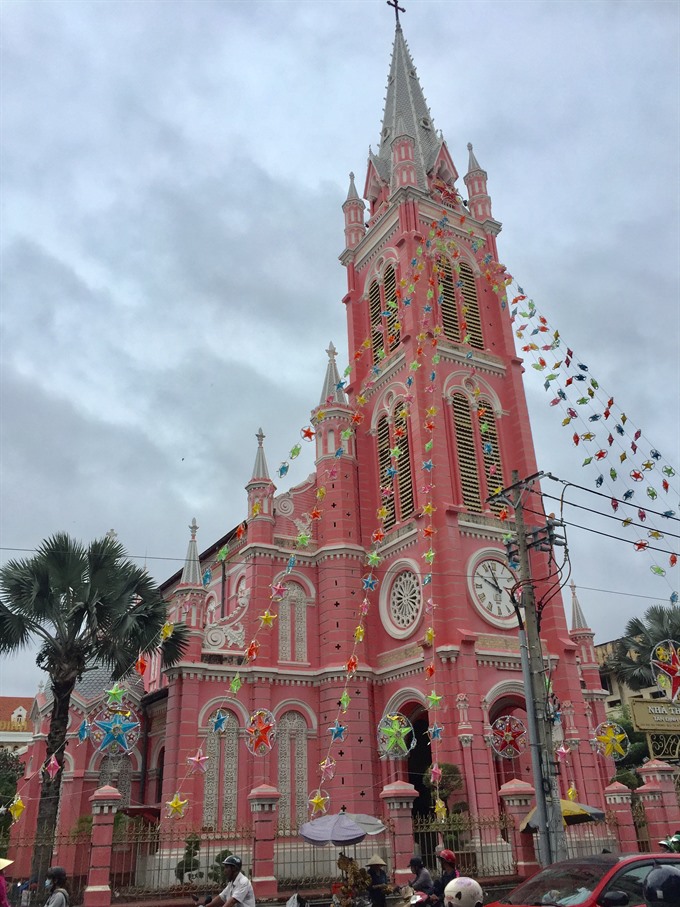 |
| Colourful construction: Built from 1870 to 1876, Tân Định Church, known as the “pink church” by locals, is one of the city’s oldest and most important Roman Catholic institutions. VNS Photo Bồ Xuân Hiệp |
Besides the cathedral, other beautiful churches in the city include Tân Định Church, built from 1870 to 1876.
“You just have to mention the ‘pink church’ and everyone knows which one you mean,” Doling writes in his blog.
But few are aware that Tân Định Church is one of the city’s oldest and most important Roman Catholic institutions.
Designed in a Romanesque style with Gothic and Renaissance elements, the church includes a nave with a tall barrel-vaulted roof (today hidden by a false ceiling), separated by arcades from side aisles and outer corridors.
The design incorporates a triforium or shallow-arched upper gallery and features two apsidal chapels that extrude from either side of the nave, close to the entrance, according to Doling. The one at the right as you enter is dedicated to Mary and Joseph, while the one to the left is dedicated to St Theresa.
The saints’ statues and the 14 Stations of the Cross, which adorn the outer side aisle pillars, date from the 1890s.
Another famous structure that should not be missed is the Huyện Sỹ Church.
The Église Huyện Sỹ in District 1 was built from 1902 to 1905 at the corner of Nguyễn Trãi and Tôn Thất Tùng streets, through the beneficence of Huyện Sỹ (1841-1900; real name: Philippe Lê Phát Ðạt), who was once the richest man in southern Việt Nam.
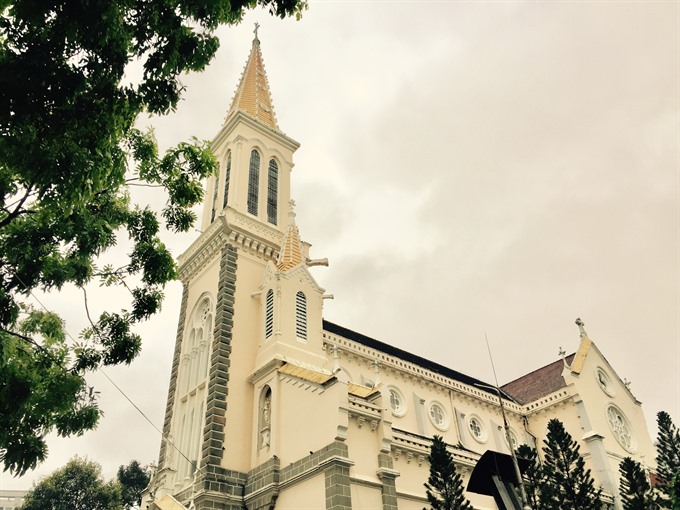 |
| Rich history: Built from 1902 to 1905, Huyện Sỹ Church was built by and named after Huyện Sỹ (1841-1900; real name Philippe Lê Phát Ðạt) who was once the richest man in southern Viet Nam. VNS Photo Bồ Xuân Hiệp |
The church was named after Huyện Sỹ, who was born in a Catholic family from Long An Province. The building has been refurbished on numerous occasions, most recently from 2007 to 2009.
The brick church, which measures 40m long by 18m wide, has pillars and decorative work in Biên Hòa granite. Above the front vestibule is a 57-m high bell tower, and a statue of St Philip stands at the main entrance.
The design of the church is Gothic with Romanesque decorative elements, with a vaulted nave flanked by vaulted aisles decorated in pastel green and white. The windows are adorned with images of Bible stories in Italian stained glass.
Along the walls are statues of Biblical and Vietnamese saints and the 14 Stations of the Cross. On either side of the transept are small chapels dedicated to Virgin Mary and St Joseph.
The chancel features a richly decorated marble high altar, which stands on an open platform and features ornate gilding work and exquisitely carved bas reliefs of biblical scenes, including The Last Supper and The Angel Gabriel Visits Mary.
Huyện Sỹ passed away in 1900 before the church was completed. When his wife Huỳnh Thị Tài died in 1920, he was reburied alongside his wife in the axial memorial chapel immediately behind the chancel.
Elaborately carved from the finest marble, the tombs feature full-length effigies of the couple. Busts of Huyện Sỹ and Huỳnh Thị Tài are also installed on the walls.
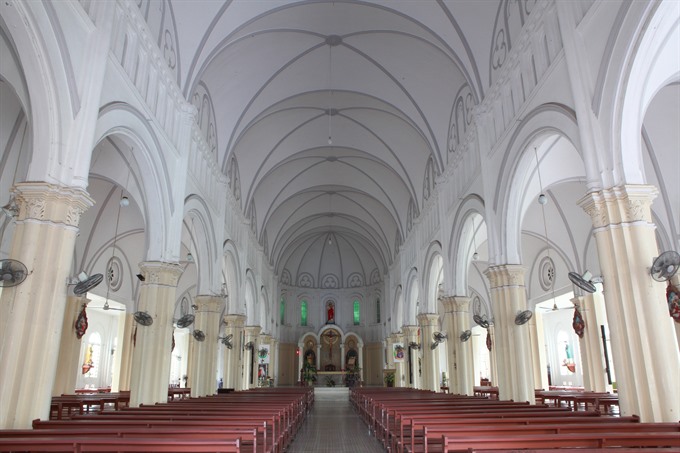 |
| Imposing features: The dome in Chợ Quán Church is one of the most significant features of the church. VNS Photo Bồ Xuân Hiệp |
Chợ Quán, Cha Tam churches
Besides these structures, visitors should also stop by the Chợ Quán Church in District 5. The Catholic Church with solemn, magnificent architecture opened in 1896.
The church is decorated in a French Gothic style with a pointed dome and large bell tower. From the top of the tower, tourists can see a panoramic view of the city. The ringing of the church bells emits a sense of peace and tranquility.
The Cha Tam Church, commonly known as St Francis Xavier Parish Sài Gòn, was built in 1900 and completed in 1902. Its distinctive character reflects a mixture of European, Chinese and Vietnamese architectural styles.
The church has Gothic architecture like many churches in Europe, but Chinese features are incorporated, including a name written in kanji, a tiled roof, a curved sword, and a two-sided cross.
On the roof of the church are a lotus and two painting scrolls written in kanji. The four main pillars are red, a feature rarely seen in Catholic churches.
During the Christmas holiday, all of these historic churches are adorned with decorations that attract both foreign and local tourists.
 |
| Amidst the trees: The oldest Catholic church in the city is Chợ Quán Church in District 5 which is surrounded by many trees. It opened in 1896. VNS Photo Bồ Xuân Hiệp |
Heritage tours
Besides his heritage blog, Doling has written a new walking tour guidebook called Exploring HCM City.
He also runs Heritage Tours, which introduces a wealth of lesser-known places of interest, alongside the city’s better-known historic sites.
Originally trained as a medieval historian, Doling has spent most of his career in the cultural sector, running theatres and arts centres in Coleraine (Northern Ireland), Horsham (England) and Hong Kong, and undertaking cultural projects in Asia, Africa and Europe.
First visiting HCM City in 1989 on holiday from Hong Kong, where he was working as chief executive of the Hong Kong Arts Centre, he found the city so beautiful and interesting that he sought to return.
In 1990, Doling organised a research trip to Việt Nam to set up cultural exchanges between his arts centre and Vietnamese arts organisations, beginning his long connection with Việt Nam. — VNS
Inbox:
Sài Gòn Notre-Dame Cathedral
Address: 1 Công Xã Paris, Bến Nghé Ward, District 1, HCM City
Phone number: (08) 3829 4822
Hours: 5:30am – 5pm (daily)
Tân Định Church
Add: 289 Hai Bà Trưng Street, Ward 8, District 3, HCM City
Phone number: (08) 3829 3088/ (08) 3829 0093
Hours: 5am – 7pm (daily)
Huyện Sỹ Church
Add: 1 Tôn Thất Tùng Street, Phạm Ngũ Lão Ward, District 1, HCM City
Tel: 84 (0) 8 3833 0820, 84 (0) 8 3925 5806
Hours: 8am-11am, 2pm-4:30pm (Tue-Sat)
Chợ Quán Church
Add: 120 Trần Bình Trọng Street, District 2, Ward 5, HCM City
Phone number: (08) 3923 5067
Hours: 5am – 5:30pm (daily)/6pm (Sunday)
Cha Tam Church
Add: 25 Học Lạc Street, Ward 14, District 5, HCM City
Tel: (08) 3856 0274
Hours: 5:30am – 5:30pm (daily)
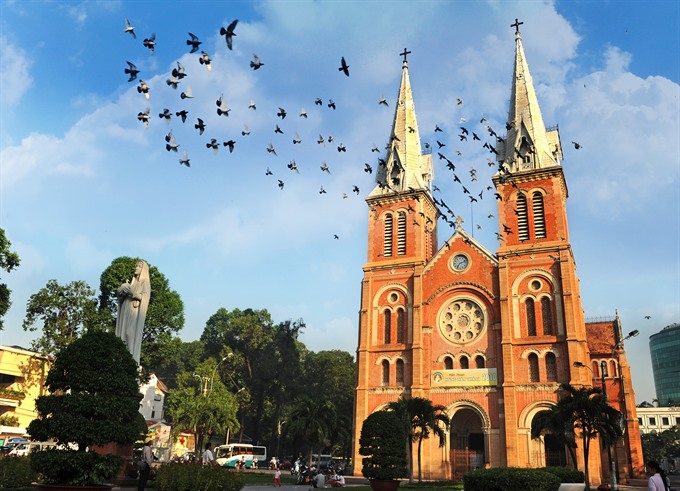 |
| Iconic building: Built in 1877-1879 to a design by Jules Bourard, the Sài Gòn Notre Dame Cathedral downtown is a major tourist attraction in HCM City. VNS Photo Phương Đặng |



